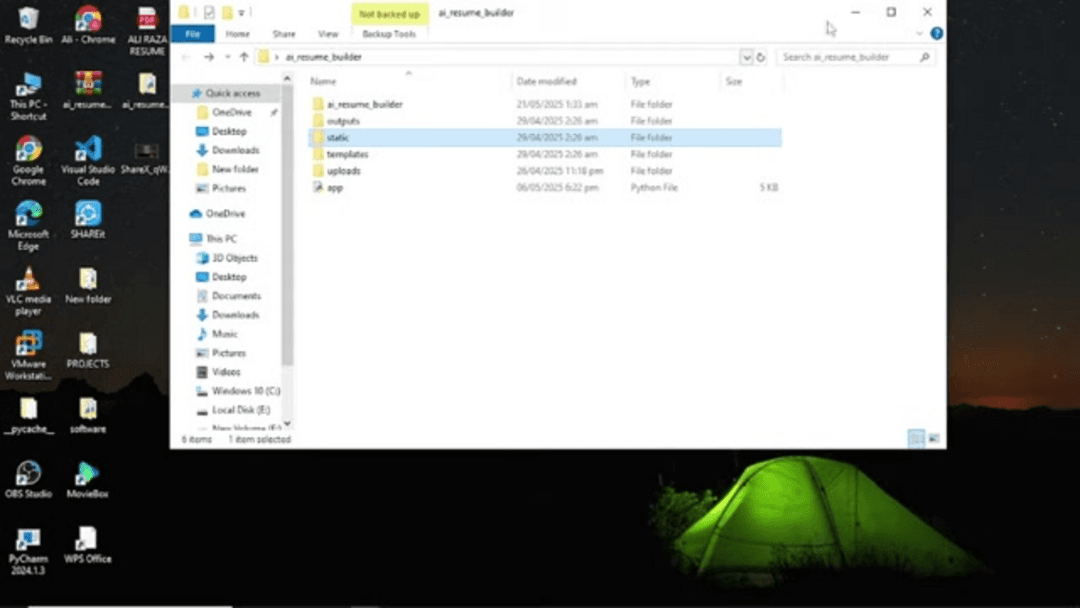Annotation
- Introduction
- Project Setup and Structure
- Key Benefits of AI Resume Building
- Implementing the AI Resume Builder
- Pros and Cons
- Conclusion
- Frequently Asked Questions
Build AI Resume Builder with Python Flask: Complete Tutorial Guide
Learn to build an AI-powered resume builder using Python and Flask. This tutorial covers AI model integration, template design, and automated resume

Introduction
In today's competitive job market, a professionally crafted resume is essential. AI-powered tools revolutionize resume creation by automating formatting and content optimization. This guide teaches you to build an AI resume builder with Python and Flask, integrating web development and artificial intelligence for automated, optimized resumes. Perfect for developers expanding their portfolio or those interested in AI automation platforms.
Project Setup and Structure
Creating a well-organized project structure is key for a maintainable AI resume builder. Start with a main directory 'ai_resume_builder' to separate backend logic, frontend templates, static assets, and outputs. This organization supports scalability and collaboration.
Setting Up the Project
Establish clear directory hierarchies for app.py (Flask routes and logic), templates (HTML resume structures), static files (CSS and JavaScript), uploads (user assets), and outputs (generated PDFs). This separation follows web development best practices.

Essential Files and Folders
Key files include app.py for Flask configuration and AI integration, templates for HTML with Jinja2 dynamic content, and static for CSS styling. This foundation aids integration with AI APIs and SDKs.

Key Benefits of AI Resume Building
AI integration offers advantages over traditional methods, such as analyzing job descriptions, optimizing keywords for ATS systems, and improving content impact.
Content Optimization
AI uses NLP to suggest impactful phrasing, action verbs, and industry terms, transforming generic descriptions into compelling narratives.
Keyword Matching
AI identifies critical keywords from job descriptions to ensure resume inclusion, increasing chances of passing automated screenings.
Grammar and Style Check
Beyond grammar correction, AI evaluates style consistency and readability, similar to writing assistant tools.
Implementing the AI Resume Builder
This section details setting up the Flask backend, integrating AI models, creating templates, and enabling PDF generation.
Understanding Core Components
The builder has three parts: backend (Python/Flask for logic and AI), templates (HTML/Jinja2 for structure), and styling (CSS for visuals). Each ensures a seamless user experience.

Importing Libraries and Flask Setup
Install Flask, transformers, pdfkit, and utilities. Configure the app instance, upload directories, file limits, and extensions for secure handling, akin to document editing tools.

Loading AI Models
Use pre-trained models like Flan-T5 Large for content generation and optimization. Load tokenizer and model, then create functions for AI-enhanced content, demonstrating AI chatbot technology.

Text Cleaning and AI Generation
Preprocess text to remove special characters and spaces, then use AI for personalized content. Error handling ensures fallbacks for unavailable services.

Designing Dynamic Templates
Use Flask templating to flow user data into HTML, supporting various resume styles for different industries while maintaining professionalism.
Adding Download Function
Enable PDF download using pdfkit to convert HTML to professional documents, handling edge cases for reliability.

Pros and Cons
Advantages
- Automates resume creation saving significant time
- Provides intelligent content and formatting suggestions
- Optimizes keywords for applicant tracking systems
- Offers multiple professional template designs
- Scalable foundation using Flask and Python
- User-friendly interface with guided input fields
- Continuous improvement through AI model updates
Disadvantages
- Dependent on reliable AI model performance
- Potential bias in AI-generated content
- May lack personal touch in some cases
- Requires regular maintenance and updates
- Substantial initial download for AI models
Conclusion
Building an AI resume builder with Python and Flask showcases practical web development and AI integration. This project benefits job seekers and serves as a learning experience in full-stack development. The combination of Flask and AI models provides a scalable base for extensions like AI prompt optimization. As the job market evolves, AI-enhanced tools will remain valuable for career advancement.
Frequently Asked Questions
What programming skills do I need to build this AI resume builder?
You need proficiency in Python for backend logic and AI integration, plus basic HTML/CSS knowledge for creating templates and styling. Familiarity with Flask framework is beneficial but can be learned through this tutorial.
Can I customize the AI model for specific industries?
Yes, you can fine-tune the pre-trained model with industry-specific datasets to improve relevance for particular job sectors like tech, healthcare, or finance through additional training steps.
How do I add more resume templates to the application?
Create new HTML files in the templates folder with corresponding CSS files in static directory. Update app.py to recognize new templates and provide selection options in the user interface.
Can this integrate with job search platforms?
Yes, through API connections. You would need to develop additional code to communicate with platform APIs and format resumes according to their specifications for automated submissions.
What AI model works best for resume content generation?
Google's Flan-T5 Large model provides excellent results for content generation and optimization, but you can experiment with other models like GPT-based alternatives depending on your specific needs and resources.
Relevant AI & Tech Trends articles
Stay up-to-date with the latest insights, tools, and innovations shaping the future of AI and technology.
Grok AI: Free Unlimited Video Generation from Text & Images | 2024 Guide
Grok AI offers free unlimited video generation from text and images, making professional video creation accessible to everyone without editing skills.
Top 3 Free AI Coding Extensions for VS Code 2025 - Boost Productivity
Discover the best free AI coding agent extensions for Visual Studio Code in 2025, including Gemini Code Assist, Tabnine, and Cline, to enhance your
Grok 4 Fast Janitor AI Setup: Complete Unfiltered Roleplay Guide
Step-by-step guide to configuring Grok 4 Fast on Janitor AI for unrestricted roleplay, including API setup, privacy settings, and optimization tips